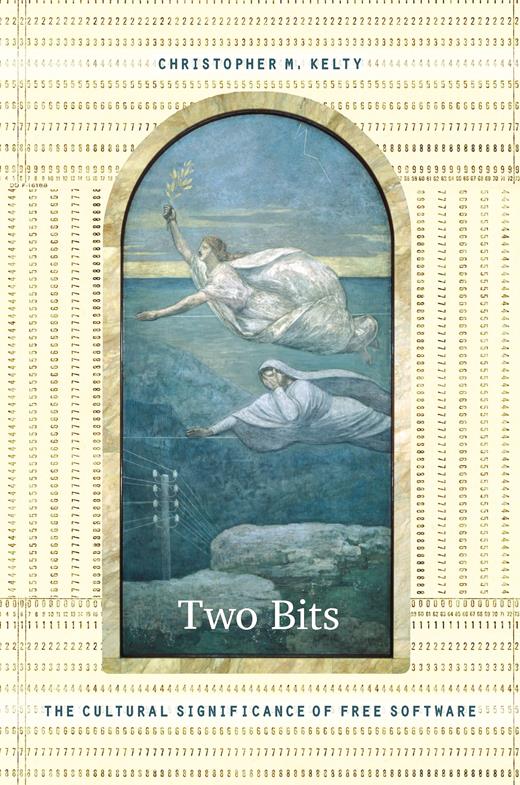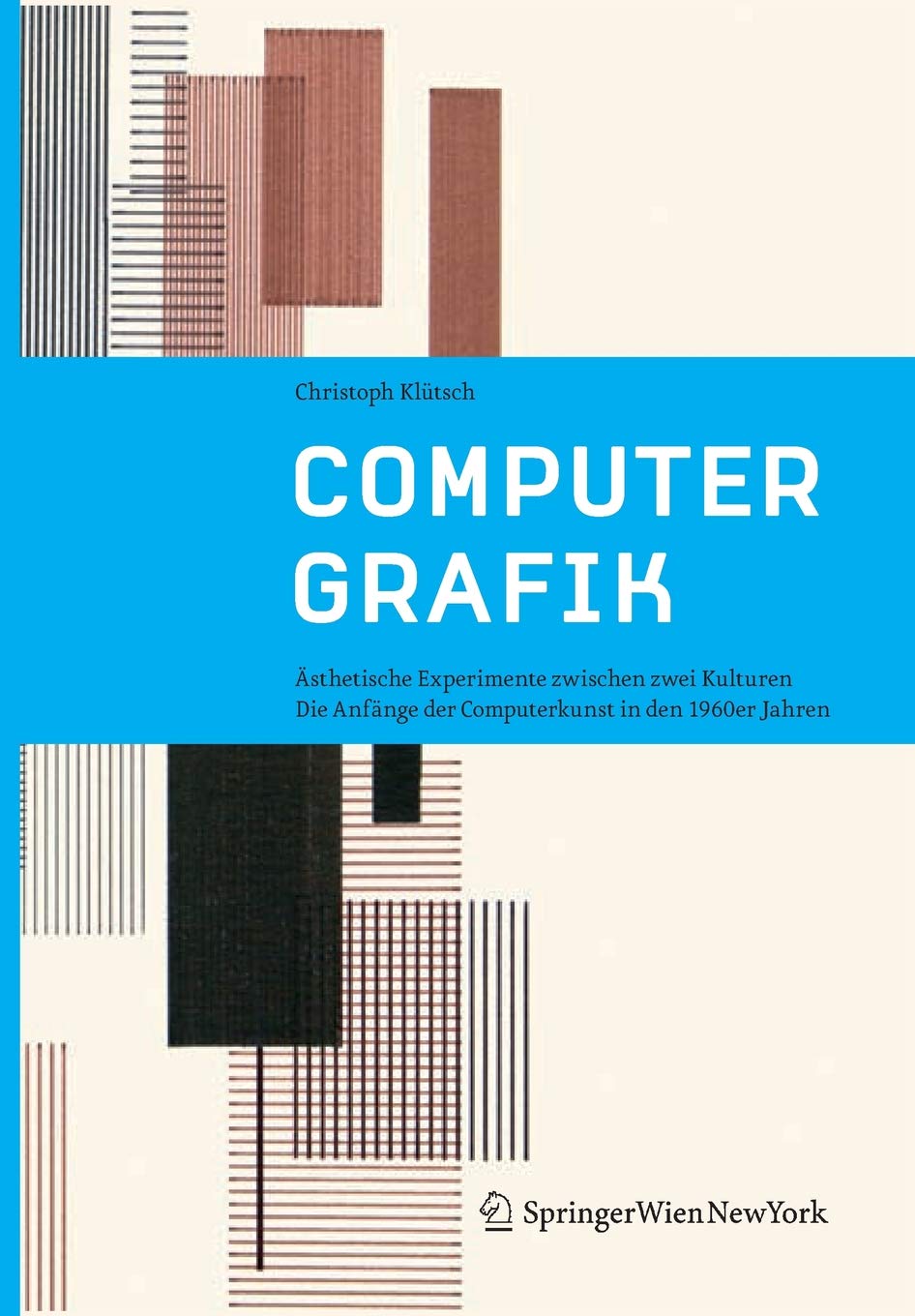Christopher M. Kelty: Two Bits: The Cultural Significance of Free Software (2008–) [EN, ES]
Filed under book | Tags: · commons, copyright, floss, free software, open source, software

“In Two Bits, Christopher M. Kelty investigates the history and cultural significance of Free Software, revealing the people and practices that have transformed not only software, but also music, film, science, and education. Free Software is a set of practices devoted to the collaborative creation of software source code that is made openly and freely available through an unconventional use of copyright law. Kelty shows how these specific practices have reoriented the relations of power around the creation, dissemination, and authorization of all kinds of knowledge after the arrival of the Internet.
Two Bits also makes an important contribution to discussions of public spheres and social imaginaries by demonstrating how Free Software is a “recursive public”-a public organized around the ability to build, modify, and maintain the very infrastructure that gives it life in the first place.Drawing on ethnographic research that took him from an Internet healthcare start-up company in Boston to media labs in Berlin to young entrepreneurs in Bangalore, Kelty describes the technologies and the moral vision that binds together hackers, geeks, lawyers, and other Free Software advocates. In each case, he shows how their practices and way of life include not only the sharing of software source code but also ways of conceptualizing openness, writing copyright licenses, coordinating collaboration, and proselytizing for the movement. By exploring in detail how these practices came together as the Free Software movement from the 1970s to the 1990s, Kelty also shows how it is possible to understand the new movements that are emerging out of Free Software: projects such as Creative Commons, a nonprofit organization that creates copyright licenses, and Connexions, a project to create an online scholarly textbook commons.”
Publisher Duke University Press, 2008
ISBN 0822342642, 9780822342649
xvi+378 pages
Book website
Publisher (EN)
Publisher (ES)
Two Bits: The Cultural Significance of Free Software (English, 2008, 3 MB, HTML (ZIP), updated on 2023-3-14)
Two Bits: la trascendencia cultural del software libre (Spanish, 2019, 8 MB, added on 2023-3-14)
Christoph Klütsch: Computergrafik: Ästhetische Experimente zwischen zwei Kulturen. Die Anfänge der Computerkunst in den 1960er Jahren (2007) [German]
Filed under book | Tags: · aesthetics, art, computer art, computer graphics, cybernetics, information aesthetics

“Computergrafik ist ein innovativer Beitrag zur ungeschriebenen Geschichte der Computergrafik der 60er Jahre. Vor dem Hintergrund C. P. Snows “zwei Kulturen” Diskussion entwickelte sich in der Stuttgarter Schule um Max Bense eine neue Form generativer bzw. algorithmischer Kunst, die die Anfänge der digitalen Computergrafik markieren. Zentrale theoretische und künstlerische Konzepte werden anhand der Werke von Frieder Nake, Georg Nees, A. Michael Noll und Manfred Mohr diskutiert. Pionierleistungen, theoretische Diskussionen und die Bezüge zu zeitgenössischen Kunstbewegungen sind systematisch aufgearbeitet und ermöglichen die Einordnung einer ästhetischen Debatte, wie sie bisher weder im Kontext einer neuen Informationsästhetik noch in der Kunstgeschichte oder in medienwissenschaftlichen Untersuchungen geleistet worden ist. Interviews mit Pionieren der Computergrafik in Deutschland und den USA, die Aufarbeitung schwer zugänglichen Quellenmaterials und eine umfangreiche Bibliographie runden das Werk ab.”
Publisher Springer, 2007
ISBN 3211394095, 9783211394090
288 pages
Key terms: Computerkunst, Frieder Nake, Max Bense, Manfred Mohr, Computergrafik, Informationsästhetik, Bell Labs, Zagreb, Serendipity, Op-Art, C. P. Snow, Informationstheorie, Konkrete Kunst, Semiotik, Kybernetik, Helmar Frank, Computerkünstler, Bridget Riley, Turing test
Review: Mihai Nadin (Image, 2007).
PDF (updated on 2020-11-20)
Academia.edu (from author, added on 2020-11-20)
Paul A. Fishwick (ed.): Aesthetic Computing (2006)
Filed under book | Tags: · aesthetics, computer art, computer graphics, data visualisation, information aesthetics

In Aesthetic Computing, key scholars and practitioners from art, design, computer science, and mathematics lay the foundations for a discipline that applies the theory and practice of art to computing. Aesthetic computing explores the way art and aesthetics can play a role in different areas of computer science. One of its goals is to modify computer science by the application of the wide range of definitions and categories normally associated with making art. For example, structures in computing might be represented using the style of Gaudi or the Bauhaus school. This goes beyond the usual definition of aesthetics in computing, which most often refers to the formal, abstract qualities of such structures—a beautiful proof, or an elegant diagram. The contributors to this book discuss the broader spectrum of aesthetics—from abstract qualities of symmetry and form to ideas of creative expression and pleasure—in the context of computer science. The assumption behind aesthetic computing is that the field of computing will be enriched if it embraces all of aesthetics. Human-computer interaction will benefit—”usability,” for example, could refer to improving a user’s emotional state—and new models of learning will emerge.
Aesthetic Computing approaches its subject from a variety of perspectives. After defining the field and placing it in its historical context, the book looks at art and design, mathematics and computing, and interface and interaction. Contributions range from essays on the art of visualization and “the poesy of programming” to discussions of the aesthetics of mathematics throughout history and transparency and reflectivity in interface design.
Contributors: James Alty, Olav W. Bertelsen, Jay David Bolter, Donna Cox, Stephan Diehl, Mark d’Inverno, Michele Emmer, Paul Fishwick, Monica Fleischmann, Ben Fry, Carsten Görg, Susanne Grabowski, Diane Gromala, Kenneth A. Huff, John Lee, Frederic Fol Leymarie, Michael Leyton, Jonas Löwgren, Roger F. Malina, Laurent Mignonneau, Frieder Nake, Ray Paton, Jane Prophet, Aaron Quigley, Casey Reas, Christa Sommerer, Wolfgang Strauss, Noam Tractinksy, Paul Vickers, Dror Zmiri
Published by MIT Press, 2006
ISBN 026206250X, 9780262062503
457 pages
Key terms: graph drawing, human-computer interaction, Christa Sommerer, Mixed Reality, mathematical beauty, computer science, Scientific Visualization, identity element, Ars Electronica, digital art, SIGGRAPH, information visualization, interaction design, computer graphics, Leonardo Journal, semiotic, aesthetic computing, series-parallel graph, Frieder Nake, Manfred Mohr
PDF (updated on 2012-10-13)
Comment (0)
